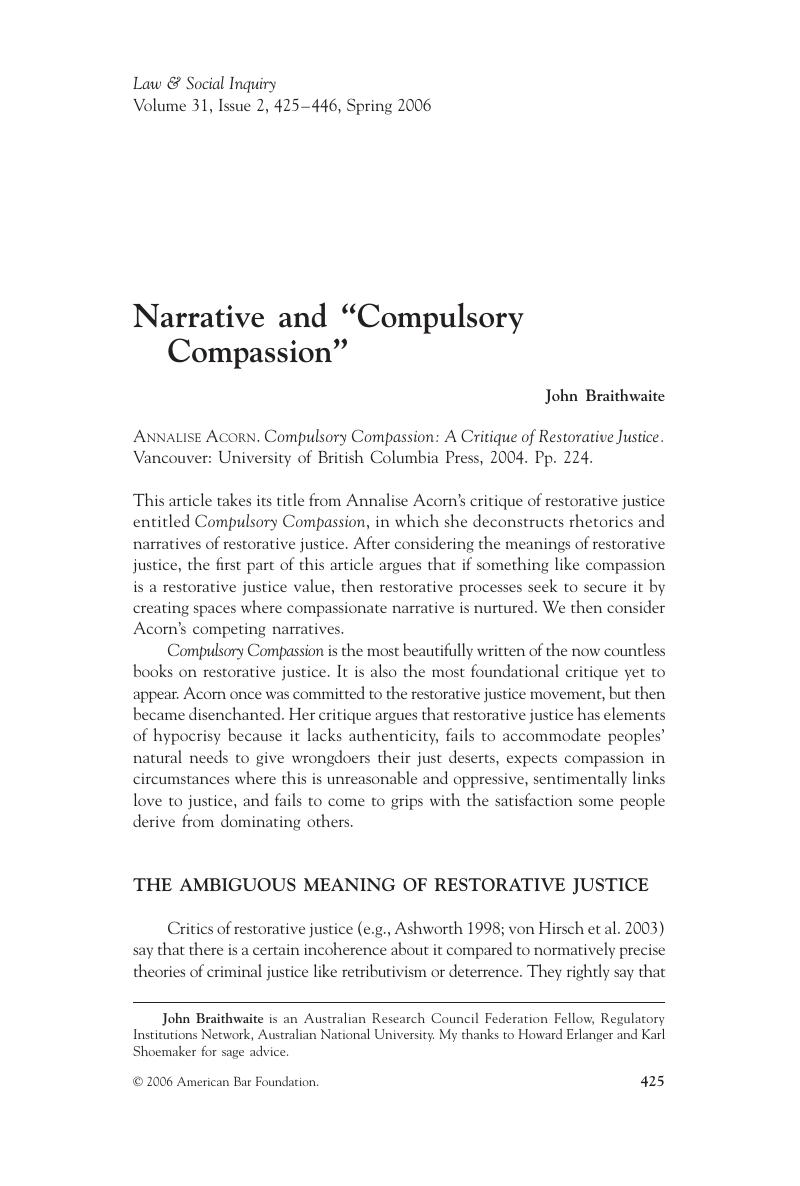Crossref Citations
This article has been cited by the following publications. This list is generated based on data provided by Crossref.
Menkel-Meadow, Carrie
2007.
Restorative Justice: What Is It and Does It Work?.
Annual Review of Law and Social Science,
Vol. 3,
Issue. 1,
p.
161.
von Holderstein Holtermann, Jakob
2009.
Outlining the Shadow of the Axe—On Restorative Justice and the Use of Trial and Punishment.
Criminal Law and Philosophy,
Vol. 3,
Issue. 2,
p.
187.
Bonsmann, Christine
2010.
What do clients have to say about therapy?.
Counselling Psychology Review,
Vol. 25,
Issue. 4,
p.
31.
Doak, Jonathan
2011.
Honing the stone: refining restorative justice as a vehicle for emotional redress.
Contemporary Justice Review,
Vol. 14,
Issue. 4,
p.
439.
Bletzer, Keith V.
and
Koss, Mary P.
2012.
From Parallel to Intersecting Narratives in Cases of Sexual Assault.
Qualitative Health Research,
Vol. 22,
Issue. 3,
p.
291.
Edmonds, Penelope
2016.
Settler Colonialism and (Re)conciliation.
p.
126.
Weber, Samantha Bent
and
Penn, Matthew
2022.
Public Health Strategies: A Pathway for Public Health Practice to Leverage Law in Advancing Equity.
Journal of Public Health Management and Practice,
Vol. 28,
Issue. Supplement 1,
p.
S27.
Batchelor, Diana
2023.
Talking punishment: How victim perceptions of punishment change when they communicate with offenders.
Punishment & Society,
Vol. 25,
Issue. 2,
p.
519.
Scholl, Mark B.
and
Townsend, Christopher B.
2024.
Restorative justice: A humanistic paradigm for addressing the needs of victims, offenders, and communities.
The Journal of Humanistic Counseling,
Vol. 63,
Issue. 3,
p.
184.



